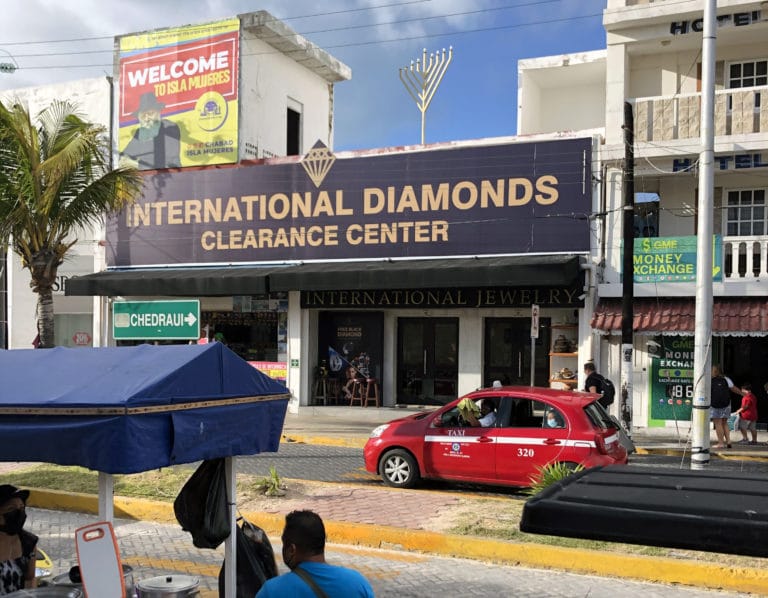
Editor’s note: This is part one of a three part series. Read part two here and part three here.
“Israel will pick you up outside next to Margaritaville,” the WhatsApp message read after we landed in Cancun.
The day started early. Very early– 3:30 in the morning early. There was still packing to be done. All that kosher for Pesach food we were bringing wasn’t going to pack itself.
Finally around 5 a.m. everything was packed: Two large suitcases, a backpack, a duffel bag filled with matzah substitute (we already arranged for the real stuff to be waiting for us upon arrival), a twice checked kosher mezuzah (this becomes important later), our vaccination records, and a cardboard box labeled all over in big red stickers ‘FRAGILE’ (its contents- all of our wine).
If it sounds like we overpacked, we didn’t. At the airport check in counter there were families with carts filled with large boxes of matzah and other family needs. It cost $30 to check our small box of wine, but at $2.50 a bottle to get to Mexico that seemed like a fair price– I don’t want to even guess how much an overstuffed cart filled with large boxes of shmurah matzah costs to fly.
Sprinkled into the crowd of early morning travellers at La Guardia was a hodgepodge of Brooklyn Jews headed off to locations scattered across the country and North America for Passover: Miami, Hawaii, Mexico, other exoctic locales overheard in passing as friends found each other roaming the terminal.
“It’s Passover, that’s why,” an airport employee on the opposite escalator said to her colleague.
Waiting at the gates in our terminal was a sea of ball caps (I was sporting my alma mater UNC), black hats, and kippot of all shapes, colors and sizes. In the far back corner of Terminal B a young Chabadnick wearing a mask was davening next to a maskless woman sipping her coffee and staring absentmindedly at her phone unaware of the scene playing out next to her.
Despite the observation of the airport employee we were still outnumbered by a good margin. It wasn’t only the Jews flying that day.
I was headed to Cancun, via Miami, bound for Isla Mujares, an island off Cancun’s coast with an interesting Jewish history.
How I ended up heading to the Caribbean for Passover is a story all on its own. The quick version? My girlfriend’s sister has been quarantining on Isla (those in the know prefer to call Isla Mujares apparently by just ‘island’) and found herself in the middle of a vibrant Jewish-Israeli community 20 minutes by ferry off the Mexican coast.
With Israel waiting outside the airport we quickly grabbed our bags weaving through the crowd of fellow passengers…. Several “excuse me’s” and “Chag sameach’s” later we were ready to head through customs… only to be stopped by an agent.
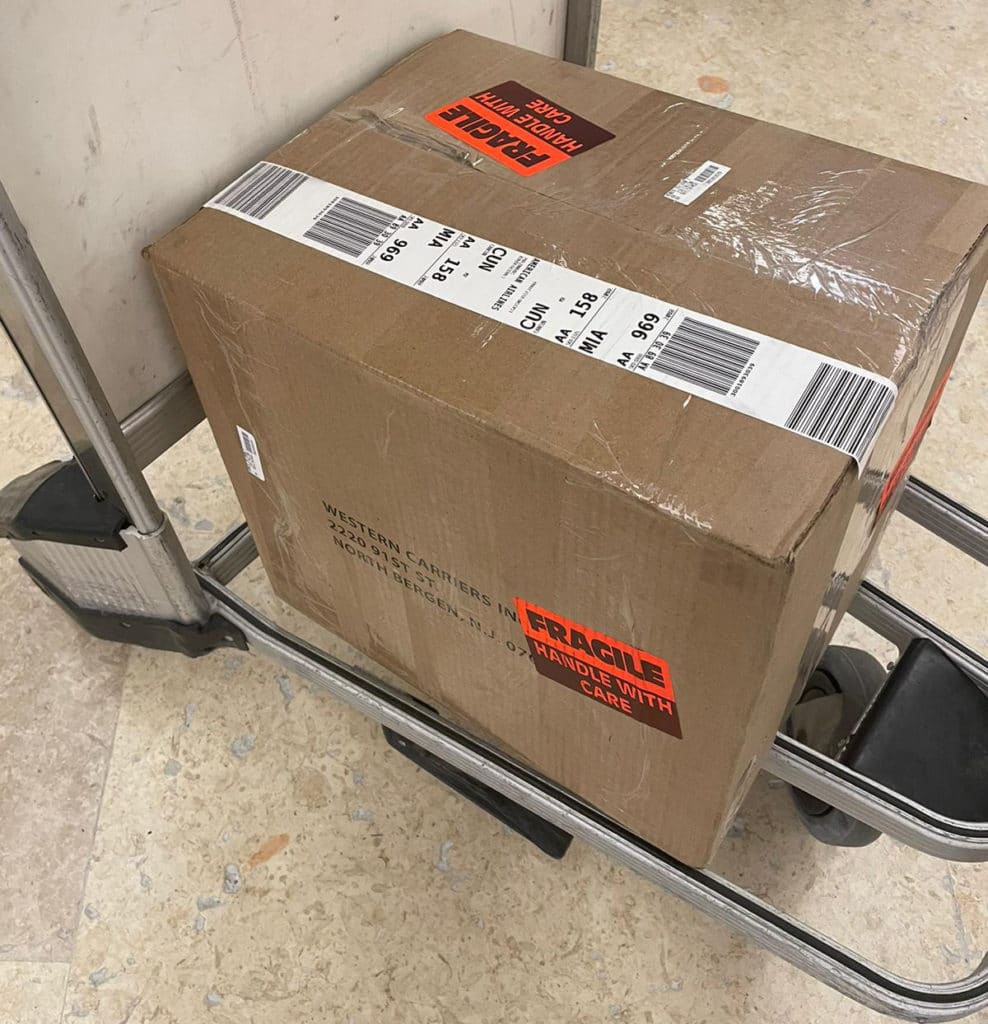
“You need to take your box over there,” he said pointing to a cornered off section of the hall with metal examining tables on it. I was pretty sure these were the same tables they conduct medical autopsies on.
Pushing the luggage over we noticed another bag under examination its contents strewn over the metal table, much like a dissection, facemask and rubber gloves included.
“What’s in the box?” a new agent asked, appearing out of nowhere.
“Wine. Twelve bottles. Six for each,” I said quickly, proud of myself for remembering the Mexican alcohol import rules.
That got us a quick glance up and down and a nod of approval.
“Okay you can go,” she told us.
Later we found out that others often experience a different kind of hospitality by Mexican officials.
“They know Jews are bringing in food,” one person told me after explaining how they were made to open up all their matzah boxes for inspection.
Who knows. Maybe my customs agent was a UNC fan. Rules are rules. I’m just glad my wine survived the 1,500 mile journey.
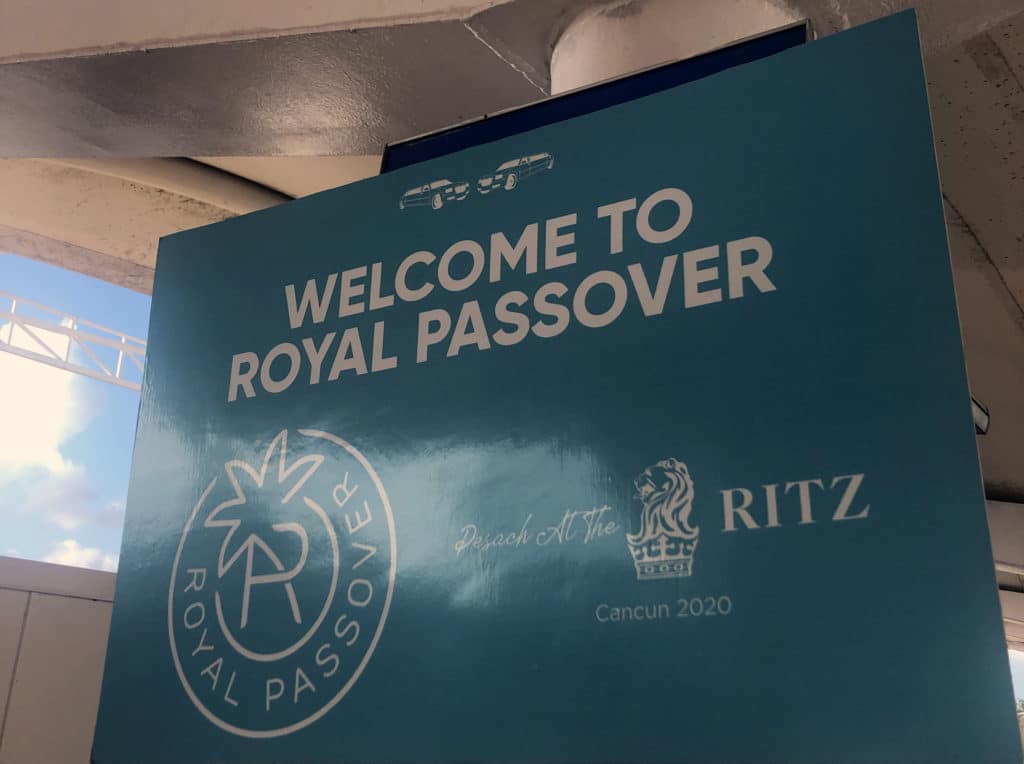
Israel, our Mexican driver, was indeed standing next to Margaritaville. He walked us to his waiting van, past a sign saying: “Welcome to Royal Passover, Pesach at the Ritz Cancun 2020.” It was unclear if that was a typo or a relic from last year’s pandemic shutdown that they brought out once again for this year. (If that’s the case, does that mean the 3 day chag has been canceled?)
Once settled in my Airbnb it was time to find the Jews. Which really wasn’t that hard to do.
I arrived in the middle of a hurricane at the Chabad house located in the center of Playa Norte, the main town on the island.
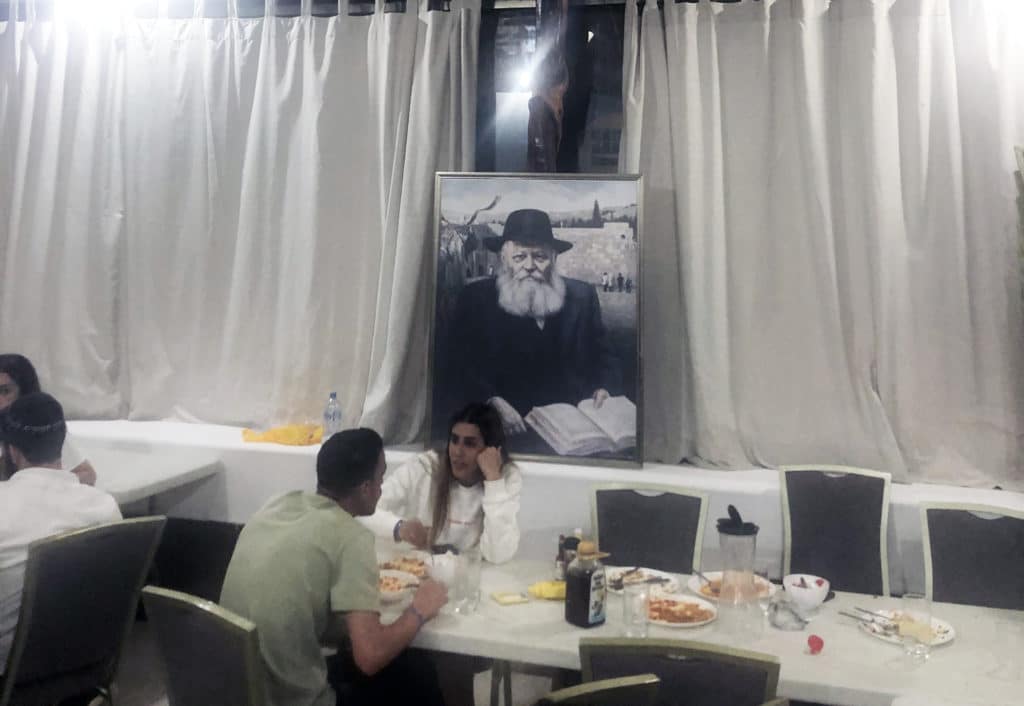
Staring back at me were faces stuffing themselves with spaghetti and meat sauce, all under the watchful eye of a Rebbe portrait hanging in the back of the room. The table to the right of me was sharing a bottle of rum. The table to the left was filled with a multi-generational Orthodox family. The table directly in front, Israeli tourists.
The room was filled with conversations in Hebrew. I wasn’t expecting my insecurity for not knowing Spanish (hablo Espanol muy mal) to be completely overcome by my insecurity of not knowing Hebrew (despite my best efforts of learning while cooking on a kibbutz in Israel). That added layer of Jewish guilt stung just a little.
The house was not expecting so many people for dinner. “Come back in 20 minutes,” we were told. But first the mezuzah. Turns out there are two Shneurs here, we talked to the wrong one.
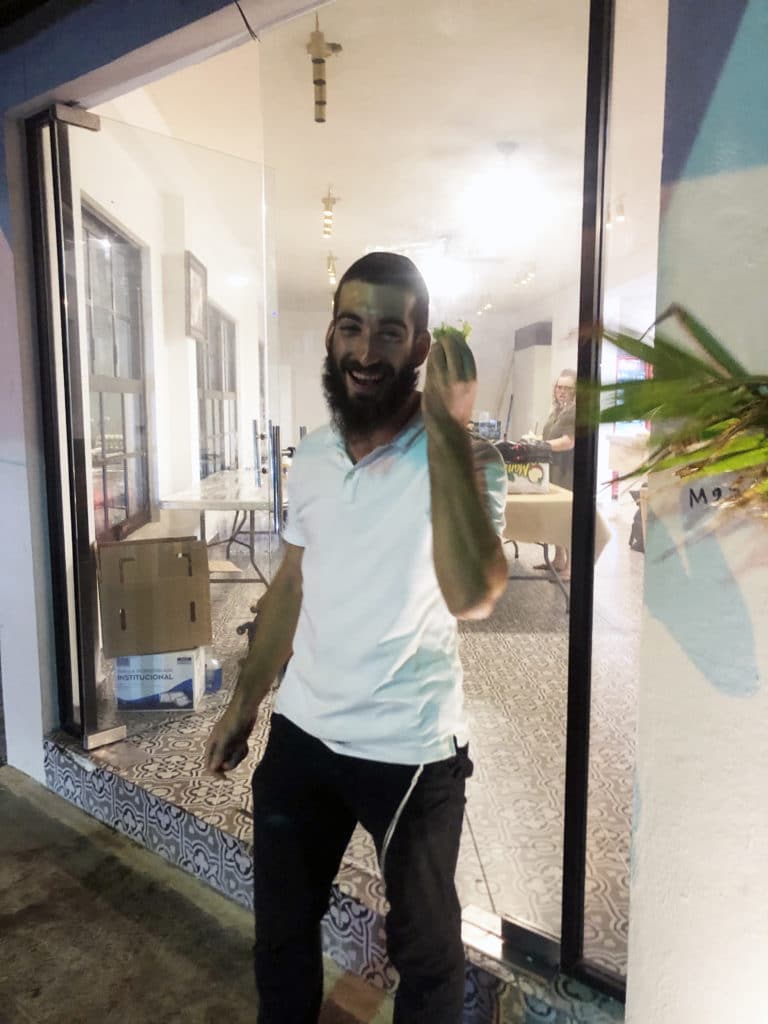
The Chabad house here is thriving, so much so they need a new, larger space. As are these things when there isn’t a large Jewish community, certain items are hard to come by– kosher mezuzahs being one of them. The rabbi requested one after hearing we were coming from Crown Heights.
Since we had 20 minutes to kill it was suggested that we head to the rabbi’s house just a block down. You could smell the bleach from the bottom of the stairs to his apartment. On the balcony children’s toys were being cleaned for Passover.
We were greeted by the right Shenur who couldn’t be older than 30 (my guess 27) and the first words out of his mouth were in animated Hebrew. Thankfully through translation and broken English we got along just fine and once learning that my name was Johnny, yes like the very famous and popular Israeli song, we bonded.
Despite our best efforts, our 20 minute sabbatical didn’t buy any time for the folks back at the Chabad House. The dining room was still a madhouse when I returned. There was an electric, albeit frantic, charge in the air. Finding a seat at the back of the room facing the kitchen we waited. Two little children, Shenur’s, joined us with plates of noodles, which they quickly started to devour with their hands (as kids do). People kept randomly coming in and asking for food. Conversations started and then halted mid-sentence when a new person arrived.
I was tired and hungry. Me, starving from a day of travel with no food in my stomach, placed an impressive order garnering one of those “are you sure looks” — schnitzel and mashed potatoes, baby chicken pargiyot and noodles. I also ordered Israeli salad but thankfully that never came.
Finding the person who actually was in charge of giving you your food seemed to be an impossible task. The little ones seemed unhappy with their plates of noodles headed back to the kitchen on their own bringing back a bottle of honey which they then added to their dinner.
My eyes became focused on the young shluchim (not even old enough to have a beard yet) haphazardly dishing out food to people. He had his kitchen running skills mastered, able to methodically bring in plates of food and touch and kiss the mezuzah in the entryway at the same time. I kept watching this performance.
Shakshuka for another table.
Noodles with bolognese.
Forks for the little ones still enjoying their noodles now with honey.
Containers of water.
Finally my plates of food. It was well worth the wait.
More orders taken around me. More conversations. The new guys now sitting next to me were visiting just for the night, they head to Columbia tomorrow for Passover. They liked my schnitzel and noodles idea. They ordered the same.
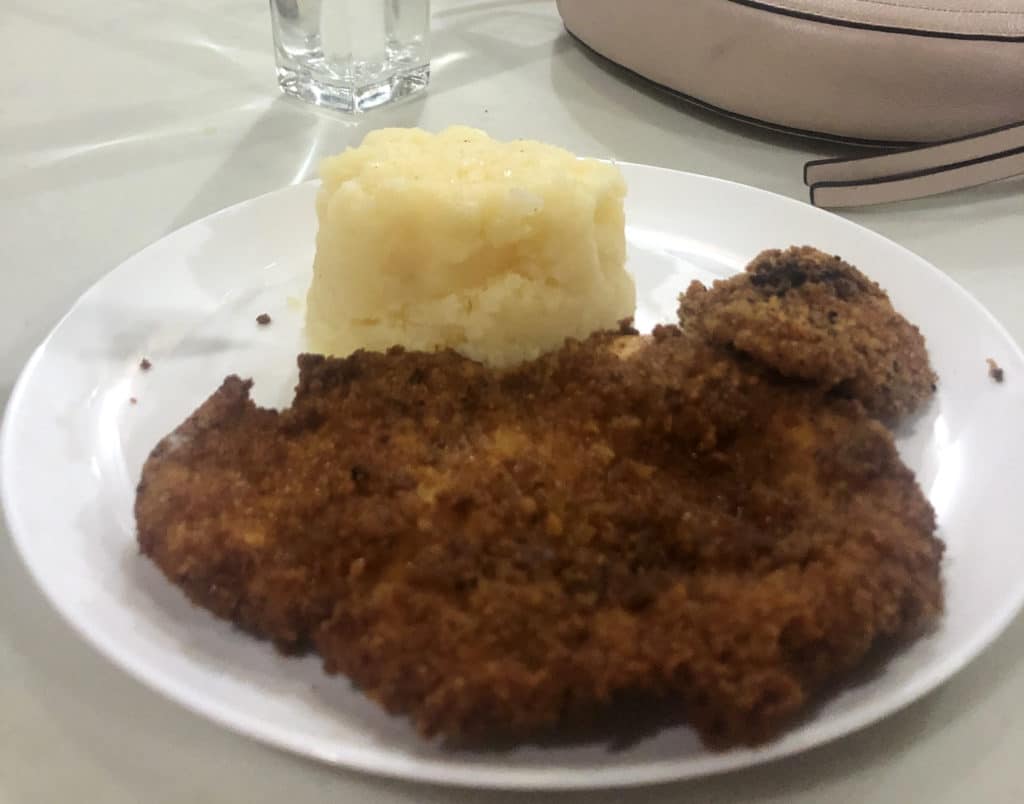
For the record, the schnitzel is very good, but I don’t recommend pouring as much habanero hot sauce on it as I did. What looked like an emotional moment was really just me nearly suffocating.
Shenur joined his family, seeing me he pulled out his phone with a smile. “Johnny” started playing above the chatter of the room.
Jewish Isla Mujares

Isla Mujares is an interesting place. Straight across the street from the ferry (the only arrival and departure point on the island) is a large menorah on top of a building. Underneath it, a large picture of the Rebbe greets travelers of all persuasions.
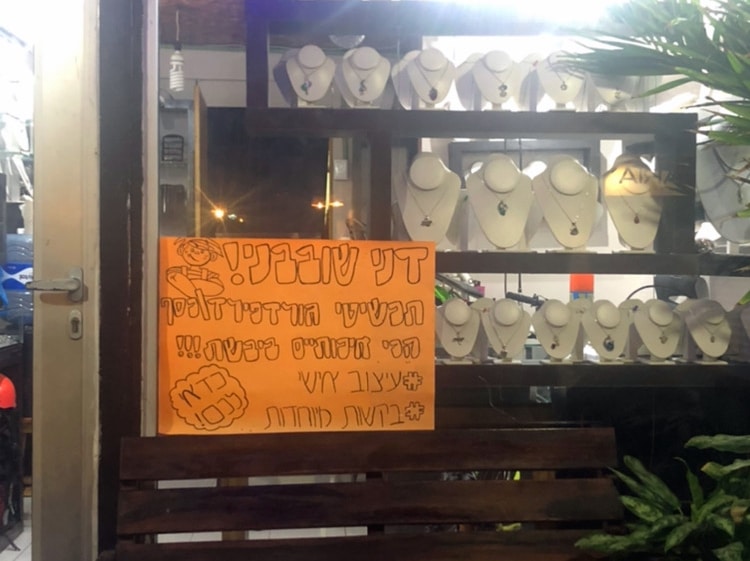
There are signs in shop windows in Hebrew here. An Israeli flag is prominently displayed next to the Mexican flag on a popular beach on the north tip of the island.
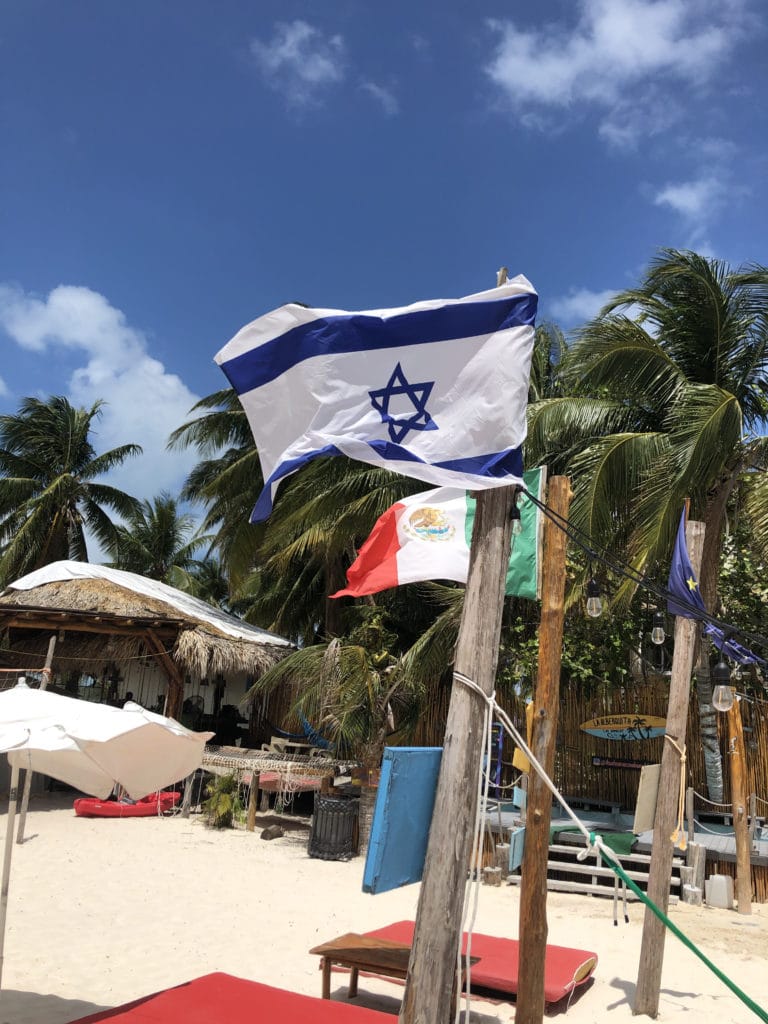
Walking through Playa Norte trying to locate an ATM a golf cart cab driver started talking to me in Hebrew. My brain not completely understanding what was happening was jolted back to reality after he asked me “nachon?!” I had flashbacks to the kibbutz kitchen.
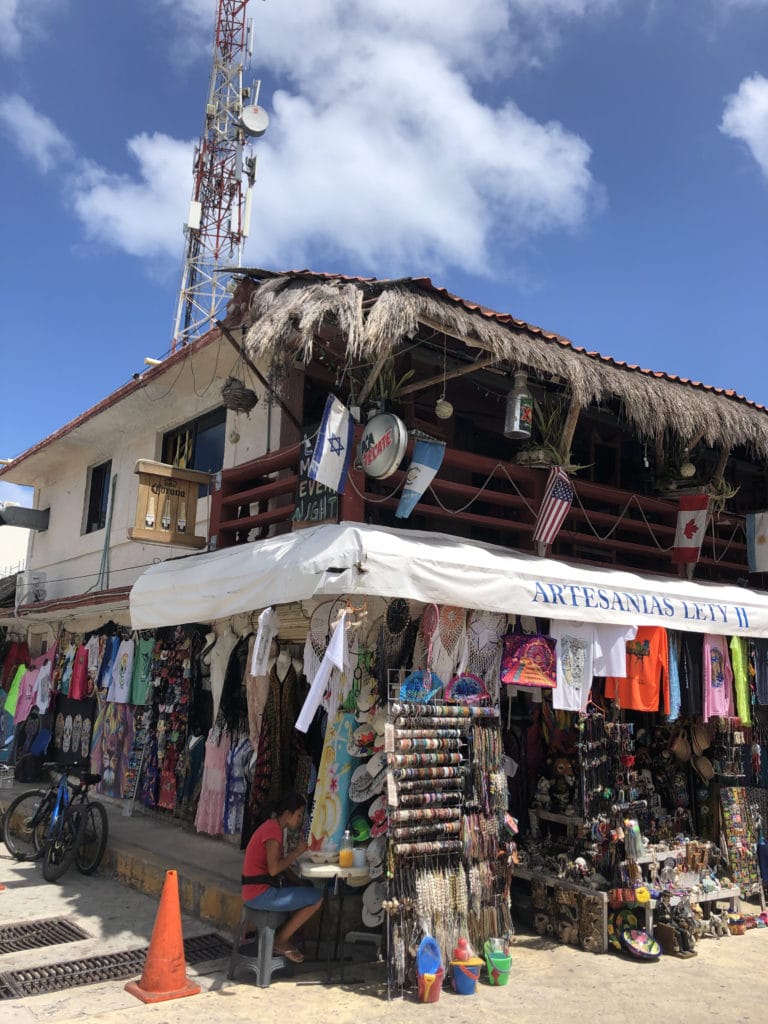
Wandering to the beach through the center of town a friendly voice called out: “Are you looking for the Chabad house?” “No, gracias, but thank you.” Turns out you’ll be asked this question a lot if you look like a wandering lost Jew.
The sad reality traveling as a Jew anywhere in the world is the fact that anti-Semites are everywhere. Even on a small island in the Caribbean. More love. Less hate. That is my #Passover wish. pic.twitter.com/X6dgig0Qgd
— Johnny “I got my 💉” Kunza (@johnkunza) March 25, 2021
Also with the good comes the bad. To say I was startled would be dramatic, but I was surprised to find a swastika spray painted on a wall along the ocean walk. A few steps further there was another on a column. Turns out this has happened before. Eh, what can you do.
It’s not that the Jews took over this small slice of paradise. Since the 60s there’s been a small contingent of Jewish and Israeli families living here. For Passover this year they’re expecting around 150 for the first night seder. Keep in mind, this is not an organized program. It’s a crowd of local families, random Chabadnicks, and random Israeli backpackers, and me your humble Passover correspondent. We all have our own version of how we ended up here for Pesach.
You can feel the disorganization and stress in the air but as Shenur told me with a smile on his face, “Gd provides.”
I have full faith they’ll pull off this Caribbean seder.
Read part two: The Seder.
Originally Published Mar 26, 2021 12:05AM EDT
